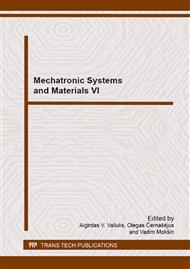p.15
p.21
p.27
p.33
p.37
p.43
p.49
p.55
p.60
CFD Analysis of Hydrodynamic Pressure Distribution in Non-Newtonian Oil in Journal Bearing Lubrication Gap
Abstract:
This paper presents the results of CFD analysis of the hydrodynamic pressure distribution in slide journal bearings lubricated by non-Newtonian oil. It was assumed that the oil shear stress varies from shear rate according to the Ostwald–de Waele relationship (power law lubricant). The comparison was related to bearings differences only in properties of lubricating oil – Newtonian and non-Newtonian properties; other parameters for both in each case were the same. The Tables show relative decrease of the maximum hydrodynamic pressure value and bearing lift capacity according to the bearing lubricated with Newtonian oil, for different values of bearing relative eccentricity.
Info:
Periodical:
Pages:
37-42
Citation:
Online since:
January 2015
Authors:
Price:
Сopyright:
© 2015 Trans Tech Publications Ltd. All Rights Reserved
Share:
Citation:


